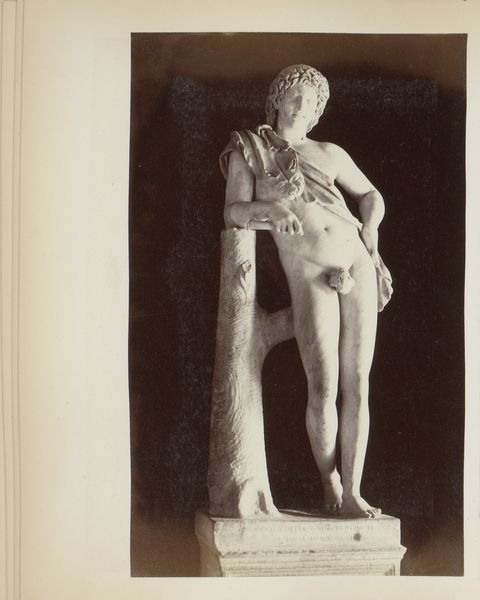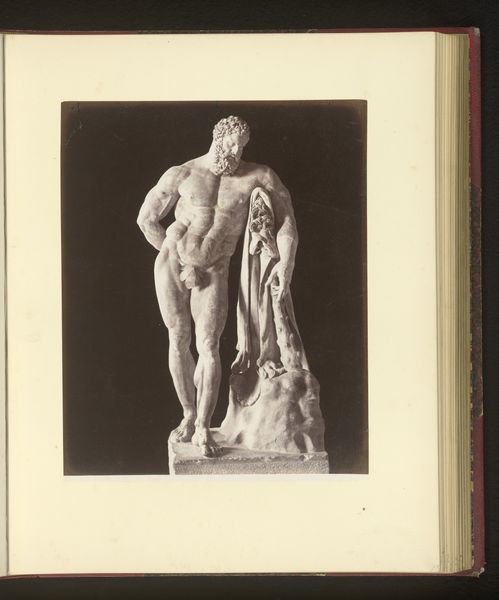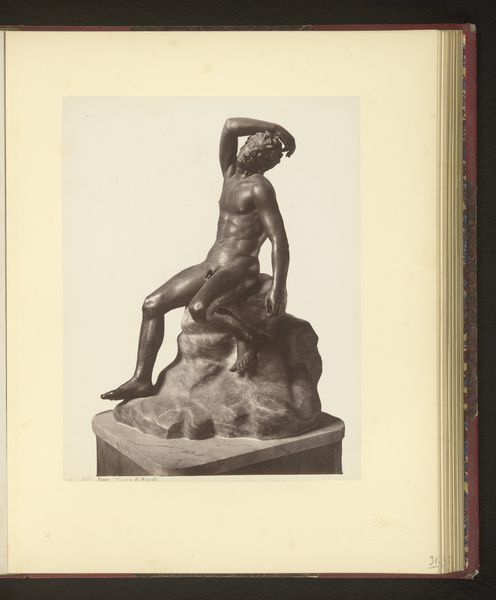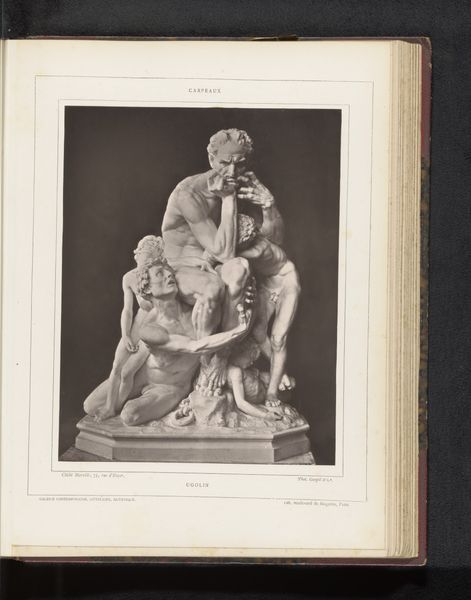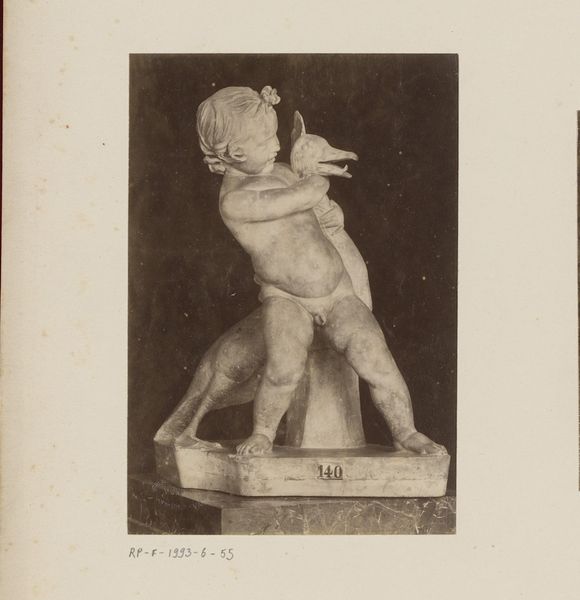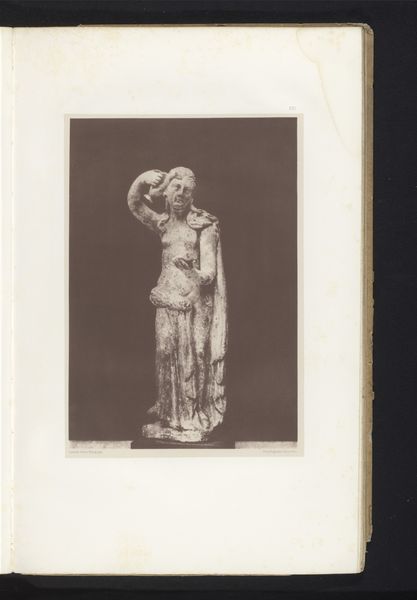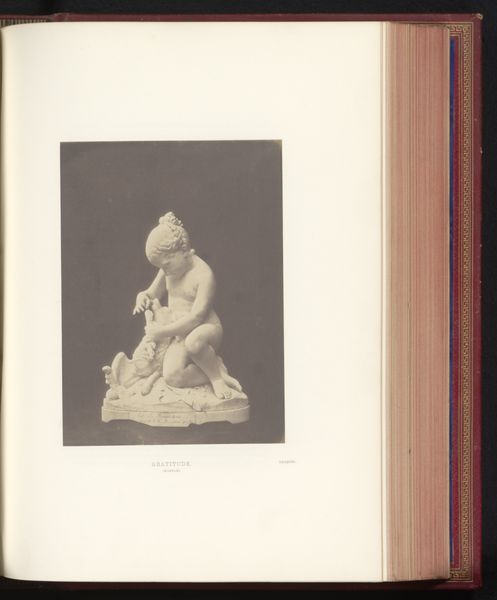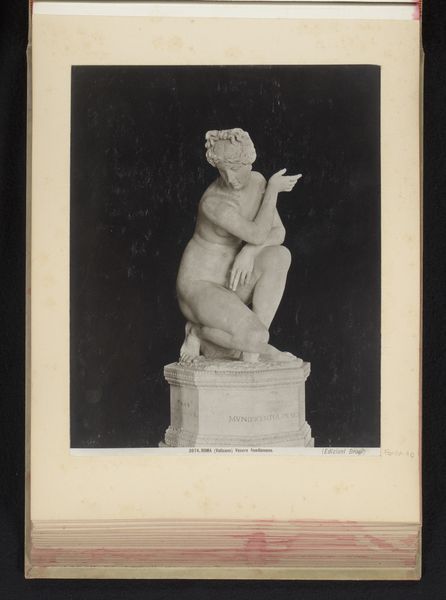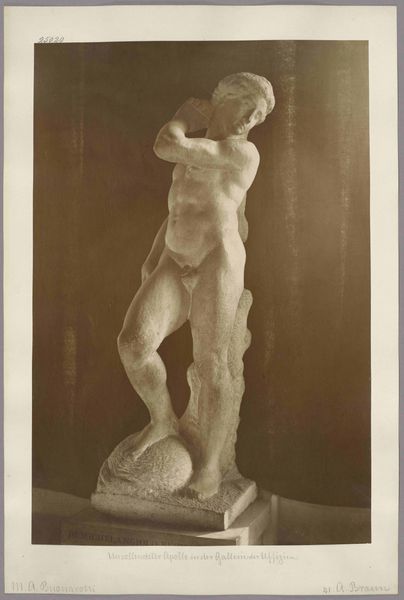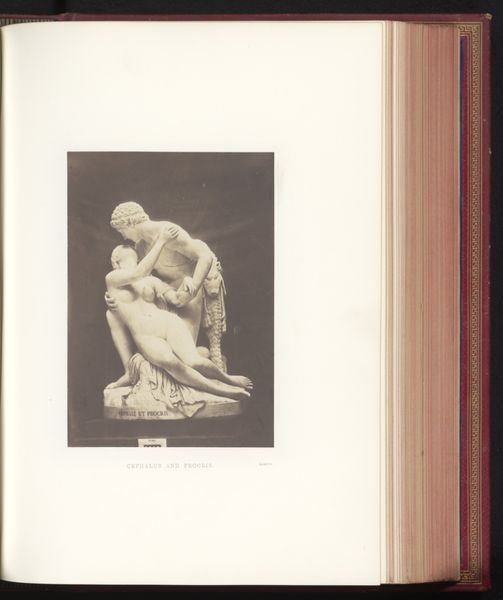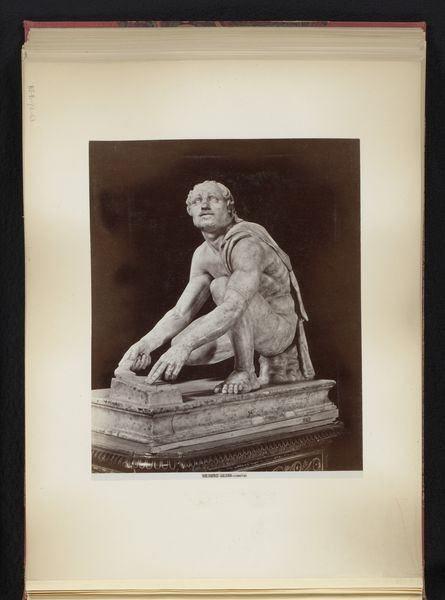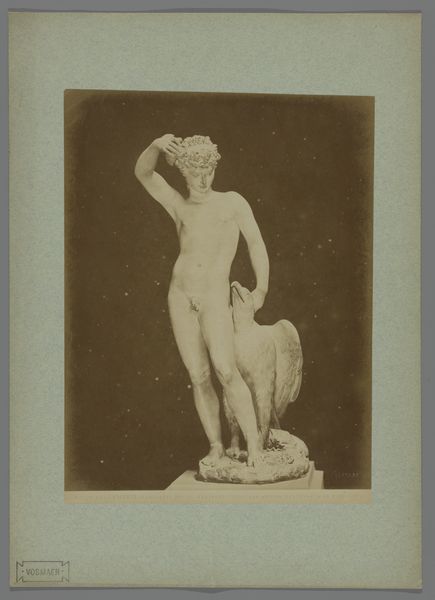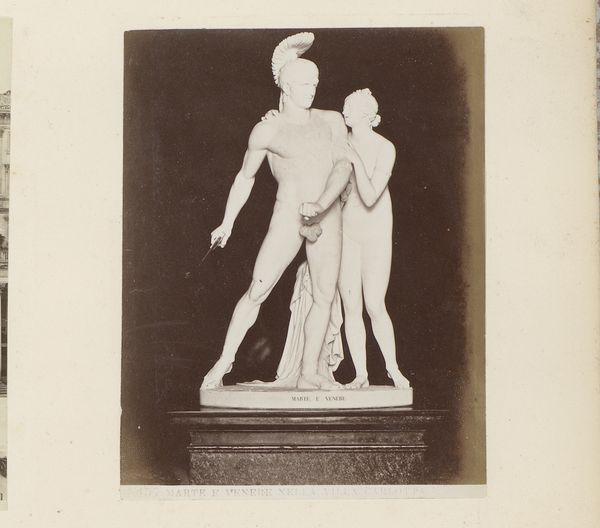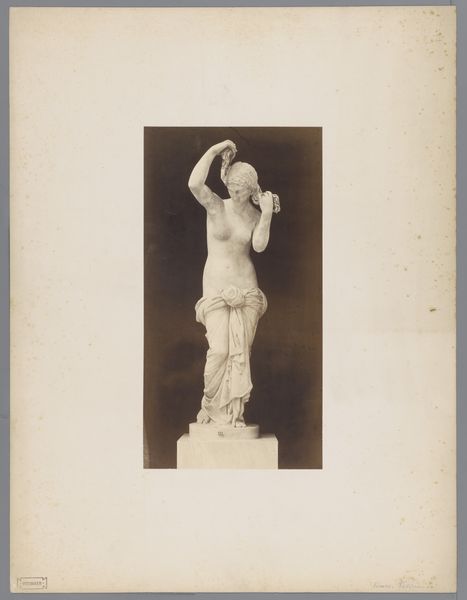
photography, sculpture
#
sculpture
#
figuration
#
photography
#
classicism
#
ancient-mediterranean
#
sculpture
#
nude
Dimensions: height 250 mm, width 189 mm
Copyright: Rijks Museum: Open Domain
Editor: Here we have Giorgio Sommer’s photograph of the Farnese Atlas, taken before 1879. It’s quite striking; the stark contrast makes the figure and celestial globe feel incredibly weighty. How do you interpret this work in its historical context? Curator: Well, seeing this image brings to mind the rise of archaeological photography in the 19th century. Consider why Sommer chose this specific sculpture, of all the possible antiquities. It was arguably a celebration of Western knowledge, right? Atlas, burdened with the world, symbolizes a particular kind of… burden. Editor: Burden? What do you mean? Curator: The acquisition and display of antiquities from around the globe certainly reflects not only art appreciation, but also European imperial power and the 'burden' of civilizing the rest of the world, supposedly. The original sculpture itself speaks of ancient power dynamics. But photographed, published, and distributed – this image reinforces specific narratives about civilization and knowledge. Do you see what I mean? Editor: I think so! It's like, the photograph isn’t just showing the statue; it’s participating in a whole system of beliefs and power structures. So, even a seemingly straightforward image of a classical sculpture can be loaded with social and political implications. Curator: Precisely! And consider who would have viewed this photograph then, and who views it now in the Rijksmuseum? The meaning shifts again, highlighting how museums themselves shape understanding. Editor: It’s amazing to think about how much a photograph can reveal, beyond just what’s visually present. Thanks for helping me see the broader context at play. Curator: My pleasure! Thinking about art's journey through history—from its creation to its display and interpretation—always offers fresh perspectives.
Comments
No comments
Be the first to comment and join the conversation on the ultimate creative platform.
